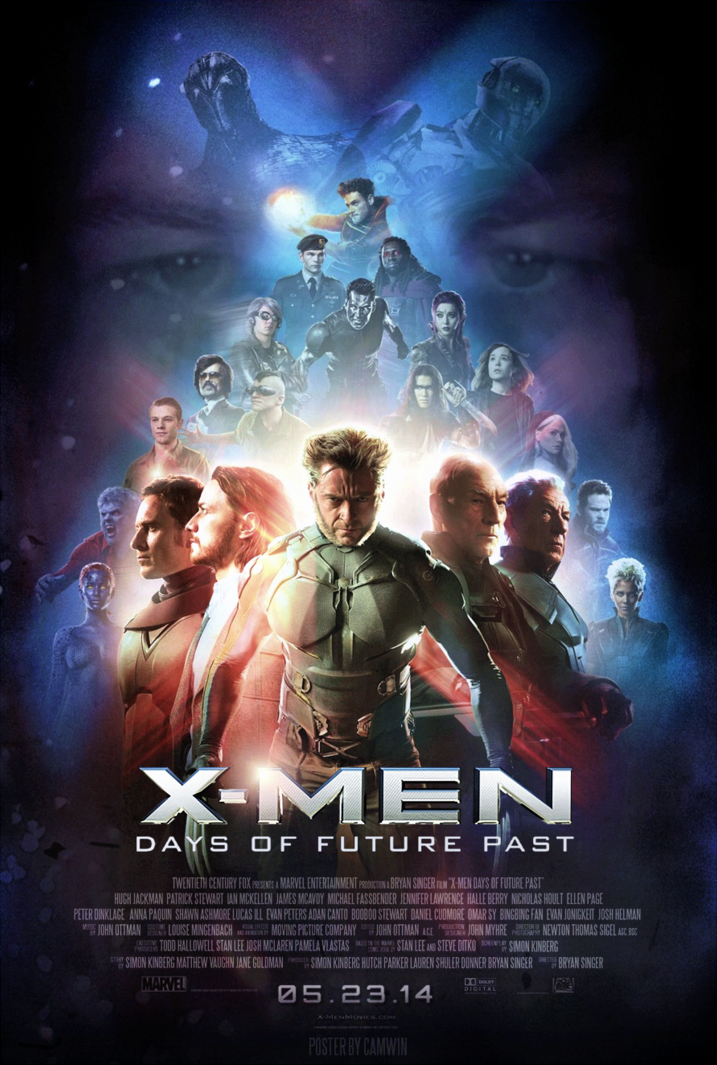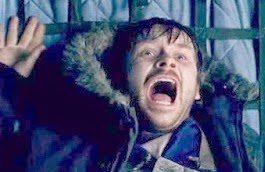Indubitably, the 80s were the years in which horror movies—and all other genres, as well—prospered. Just like the trend going on now in Hollywood, where they’re spewing out remake after remake, the 1980s were the times where studios whipped out a bunch of horror movies.
Sometimes I wonder why that decade was so good for the horror genre, issuing out one after the other. You had a Friday the 13th sequel released nearly every year, so many slasher rip-offs (that weren’t so bad) along with them, some great werewolf movies, Stephen King stories were being adapted left and right, the Nightmare on Elm Street series of films had about five within that decade…until you see all of them on a list (which I found here), you wouldn’t believe how much we’d had back during that awesome period for movies (but not the music…ugh).
Though, as the horror movies were being rolled out, the ideas started running low and quite a few bombs were dropped, ultimately making the horror genre dormant as we went right into the 1990s. But during the late 80s, there were still some gems that turned up, making the movie-going experience enjoyable. Movies like Return of the Living Dead, The Lost Boys, The Blob, and of course, Child’s Play.
Directed by Tom Holland, who’s had a hand in some classic—yet contemporary—films like Psycho II and Fright Night, Child’s Play was released in 1988 to rave reviews (even Roger Ebert gave it 3 out of 4 stars in his newspaper column). At the time, when I was getting tired of the cheesy horror films I saw, I just figured that this was another forgettable one. I hadn’t the slightest idea of what the movie was about, figuring it was just some slasher movie with some masked maniac killing a bunch of teenagers. But then word had gotten out that the film was about a doll that comes to life and wreaks havoc. It sounded all right, I thought at the time, but I didn’t think the special effects were up to snuff in making a doll look like it was alive. Thinking that I was going to see a puppet filmed from the waist up, I had no intention in seeing it and was deciding to save my money for something else. However, a group of friends wanted to go watch it, so I reluctantly went with them to our local theater (probably the Meridian Quad) and paid to see 1988’s Child’s Play.
The film opens with Detective Mike Norris (Chris Sarandon) chasing down a known criminal, Charles Lee Ray (Brad Dourif), on foot and ending up in a toy store. Wounded and about to be caught by the detective, Charles Lee Ray takes one of the popular “Good Guy” dolls—a 2-foot tall red-headed and freckle-faced
figure—and begins to perform some sort of voodoo chant as he places his hand on the doll’s head. A bolt of lightning crashes through the roof of the store at the height of his screaming mantra and blasts the area where Charles Lee Ray was conducting his ritual. Later, he’s found dead and the case is closed. The movie then shifts and centers around Karen Barclay (Catherine Hicks) and her 6-year-old son, Andy (Alex Vincent). It’s Andy’s birthday and he expects to get a Good Guy doll for a present, obviously a big fan of the children’s show as he wears Good Guy clothes and accessories. But his mother tells him she wasn’t able to get him one, upsetting him but he understands. At work, Karen’s able to buy a Good Guy doll from a homeless man and is able to give Andy the gift he’s wanted. But, soon, bad things start to happen and the doll, which is possessed by Charles Lee Ray—né Chucky—may be to blame.
I have to admit, when I first saw the appearance of Chucky as he’s revealed in his true evil form, I silently admitted to myself that my preconceived notion of Child’s Play were so wrong. Thinking I was going to see a fake-looking doll moving around from the waist up, I was pleasantly shocked to see that that wasn’t the case at all. The film truly frightened me as I put myself in place of some of the characters on screen. From the first attack by Chucky—which was implied but not seen—on Karen’s friend, Maggie (Dinah Manoff), to the climactic act where Chucky just keeps on coming after we think he’s defeated, it’s all pretty terrifying.
Probably the most intense scene that plays out in this film was when Karen has her suspicions that Chucky may be alive. As she turns the doll over to see that the battery compartment had been empty the whole time, we, as the audience, are either sitting at the edge of our seats or looking through our fingers as we cover our faces. Of course, the part that had gotten me, and had gotten a big collective scream in the movie theater when I first saw this, was when Karen threatens to throw Chucky in the fire if he didn’t talk. Showing his true face and voice for the first time was a big shock, still making me cringe when I watch it today.
For being a horror movie about a talking doll, the actors in this film definitely take it pretty seriously. I can just imagine how I would feel, having to pretend that that little doll is a threat, I don’t know if I’d be able to take the role earnestly. Let’s face it, there’s a few ridiculous parts where you think to yourself, “Just dropkick that mother fucker!” But the filmmakers, along with their special effects wizardry, were able to make this little doll a horror icon to respect.
Now, as for the special effects, I really had a hard time wondering how the heck they were able to pull off some of these scenes. Of course, a lot of the work was done using puppetry, but there were some great shots where the doll was walking on its own. I know, CGI would usually be the answer to this conundrum,
but computer effects would not be around for some time during the era of this film. As it turns out, some of the scenes were shot with a mechanical doll controlled with an apparatus. The act would be shot in such a way—with a clever angle—to hide the device, making the doll look like it was moving on its own. Other long and faraway shots would make use of a dwarf or child in the Chucky costume, adding to the eerie look of some of these scenes.
Tom Holland does a great job at directing this classic, giving us some really intense and thrilling parts of the movie that I will never forget, but the movie couldn’t have been made without Don Mancini. Mancini is the visionary of this movie, definitely knowing what scares us—a fucking doll that comes to life! Before this movie, the one movie that made me check under the bed before going to sleep (to this day!) was the third part of Trilogy of Terror. Child’s Play is just that…multiplied by a thousand. Mancini wrote this at the right time, perhaps knowing full well special effects were far along ahead enough to pull off what needed to be done, either that or he worked closely with them to work out ways to make Chucky look like an actual living doll. But, regardless, he knew that any of us who are by ourselves in a house and hearing strange noises are creeped out with that alone. Adding a living, crazy doll to the mix was pure brilliance. All the set-ups to the scares and kill scenes were written and planned out perfectly, giving us—the audience—some cringe-worthy images that we’ll never forget. Along with John Carpenter and Steve Miner for creating the icons, Michael Myers and Jason Voorhees respectively, Don Mancini had added another icon of horror to that pedestal by giving us Chucky.
Finally, Chucky wouldn’t be Chucky without the right voice and personality. Brad Dourif was impeccably cast as the little doll’s persona. He really brought out a hell of a performance during the attacks and kill scenes, sounding like he had a lot of fun recording his lines. Who can forget Chucky’s laugh? His sense of humor? This will be the one problem the studio will face if they reboot this franchise: Nobody will be able to fill Brad Dourif’s shoes in voicing this horror icon.
Although the franchise strayed from its serious tone and went with a more comedic edge in the next four sequels, it righted itself last year with the terrifying sequel, Curse of Chucky (see my review here). I’m hoping to see more from the original line of films and pray that this great series doesn’t go the reboot route as many Hollywood studios are doing.
So, what’s my final “bit” on Child’s Play?
The film is a great 80s horror flick that you’ll have fun with, especially with a big group of friends. I’ll never forget the fun I’d had in the theater and how many girls were screaming during the intense scenes featuring Chucky. For me, it’s a nostalgic walk down my horror-laden memory lane, but it still works and isn’t that dated when watching it today. I annually throw on a marathon of the Chucky movies every year and I’m starting to think it’s way past due for my 2014 viewing.
Thanks for reading and enjoy the movies!























.jpg)















